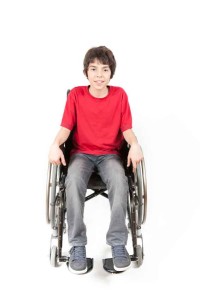Study Finds Genetic Link to Cerebral Palsy
 A recent study from researchers at the University of Adelaide links many cases of cerebral palsy to genetic abnormalities. The study, which was published in the American Journal of Obstetrics & Gynecology, has prompted some researchers to call for stricter regulations regarding cerebral palsy lawsuits because birth injuries resulting from medical malpractice often form the basis of these complaints.
A recent study from researchers at the University of Adelaide links many cases of cerebral palsy to genetic abnormalities. The study, which was published in the American Journal of Obstetrics & Gynecology, has prompted some researchers to call for stricter regulations regarding cerebral palsy lawsuits because birth injuries resulting from medical malpractice often form the basis of these complaints.
Yet, the discovery of the genetic link to cerebral palsy can only account for fewer than half of these cases.
Study evaluated cerebral palsy in Australia
The study was conducted by members of the Australian Cerebral Palsy Research Group, which works out of the Robinson Research Institute at the University of Adelaide. Earlier this year, in February, the group published research that indicated that at least 14 percent of cases of cerebral palsy may be attributable to a genetic mutation. The new review expands upon this research, arguing that up to 45 percent of cases could be due to genetics and that the number could rise further still, thanks to the increasing advancement of genetic sequencing techniques.
The lead study author is Emeritus Professor Alastair MacLennan. In releasing his team’s research, he noted that rates of Cesarean sections in Australia have increased from five percent to 34 percent during the past 50 years, despite a relatively stable rate of cerebral palsy diagnoses. He blames this apparent discrepancy on the practice of defensive medicine in response to cerebral palsy claims, stating that litigation results in a combined $300 million in payouts each year in Australia. No data was released to indicate whether or not the surge in C-sections could be attributed to cases that did not involve cerebral palsy.
The study authors expressed optimism that the results of their research would eliminate all frivolous medical malpractice lawsuits involving cerebral palsy. However, they neglected to mention that there are indeed many cases of cerebral palsy that can be directly attributed to birth trauma and that birth injuries can sometimes be a result of negligence during labor and delivery.
Cerebral palsy causes include birth injuries
Cerebral palsy is an umbrella term for a group of movement disorders that can develop because of oxygen deprivation during labor and delivery. Oxygen deprivation to the brain, known as hypoxia, may sometimes occur during prolonged labor or premature birth. In some cases, oxygen deprivation and the subsequent diagnosis of cerebral palsy occurs due to factors beyond the control of the healthcare team. However, in some tragic cases, a healthcare provider can be found liable for delaying or failing to perform a medically necessary Cesarean section, such as when the fetal heart rate monitor indicates signs of fetal distress.
Other possible causes of cerebral palsy include brain damage caused by the improper use of medical instruments during childbirth, such as a vacuum extractor and forceps. Healthcare providers may be found liable for failing to diagnose and properly treat infections during pregnancy that can cause brain damage, such as meningitis. The failure to diagnose a prolapsed umbilical cord may also cause cerebral palsy.
Science Daily, Genetic causes of cerebral palsy trump birth causes, http://www.sciencedaily.com/releases/2015/06/150602074725.htm

 Resources
Resources
 Resources
Resources

